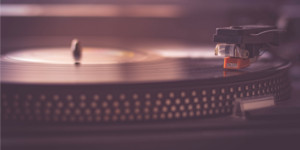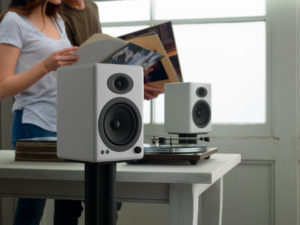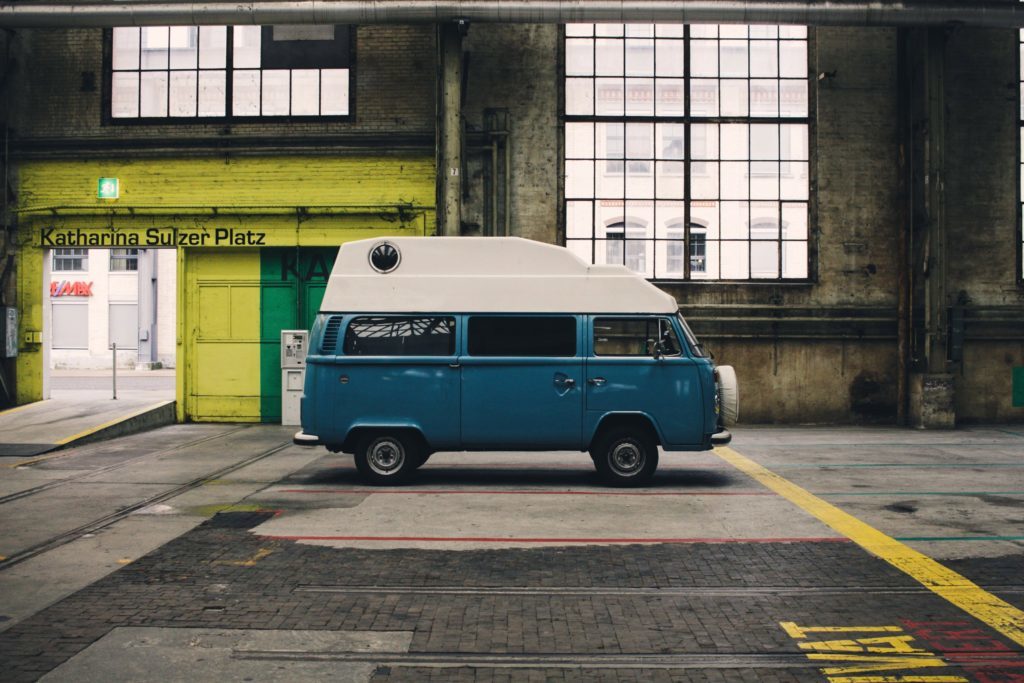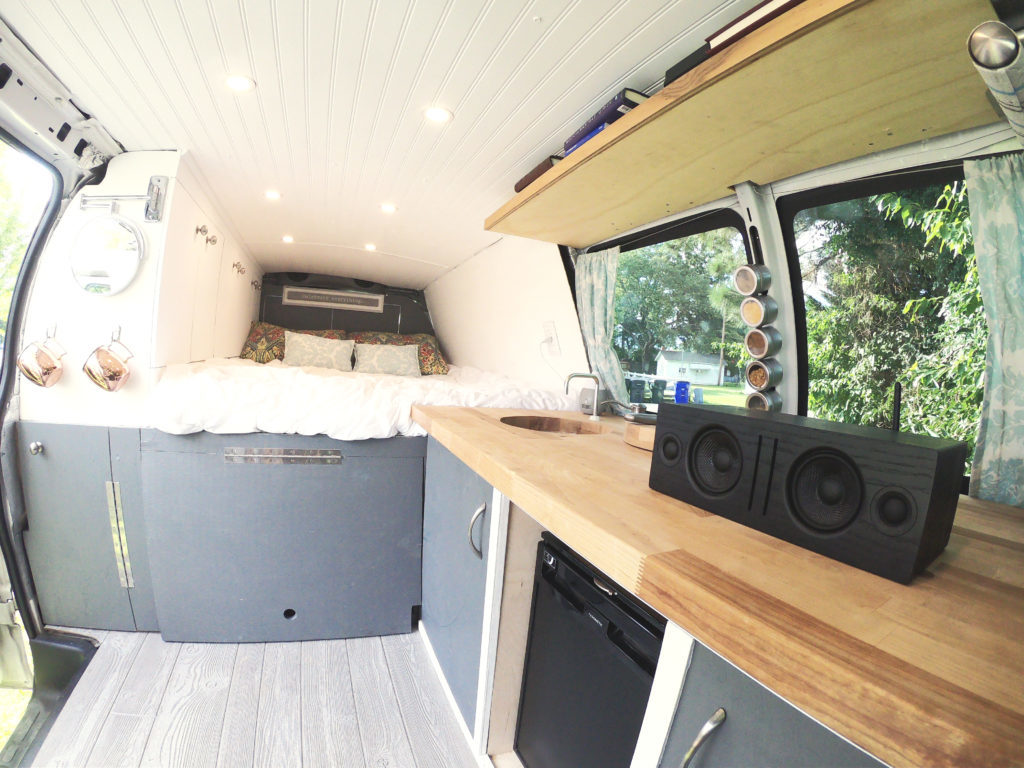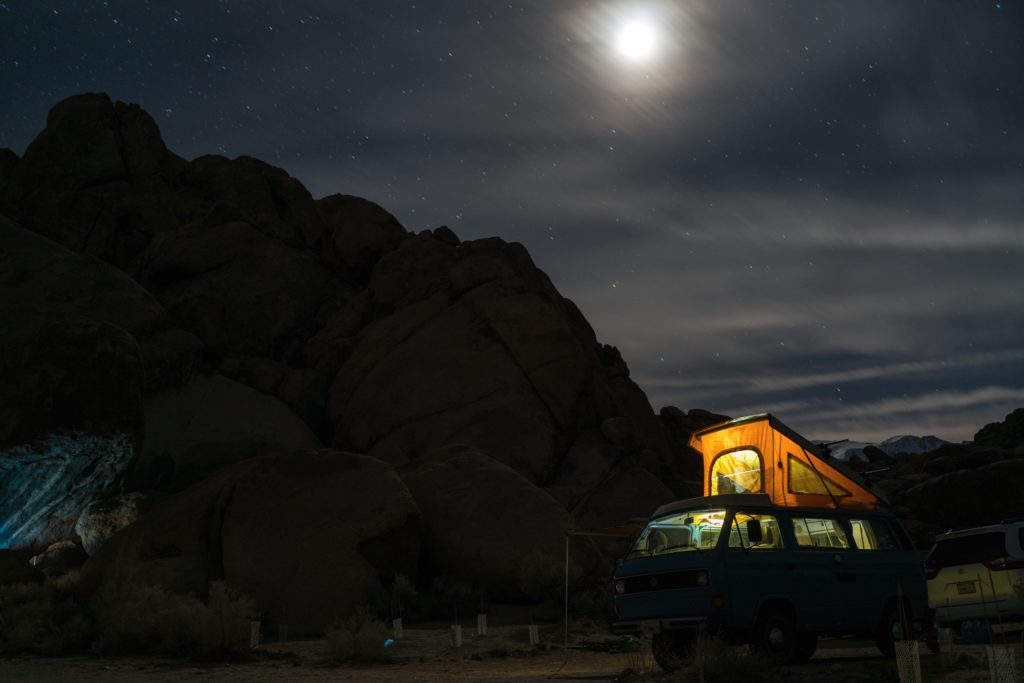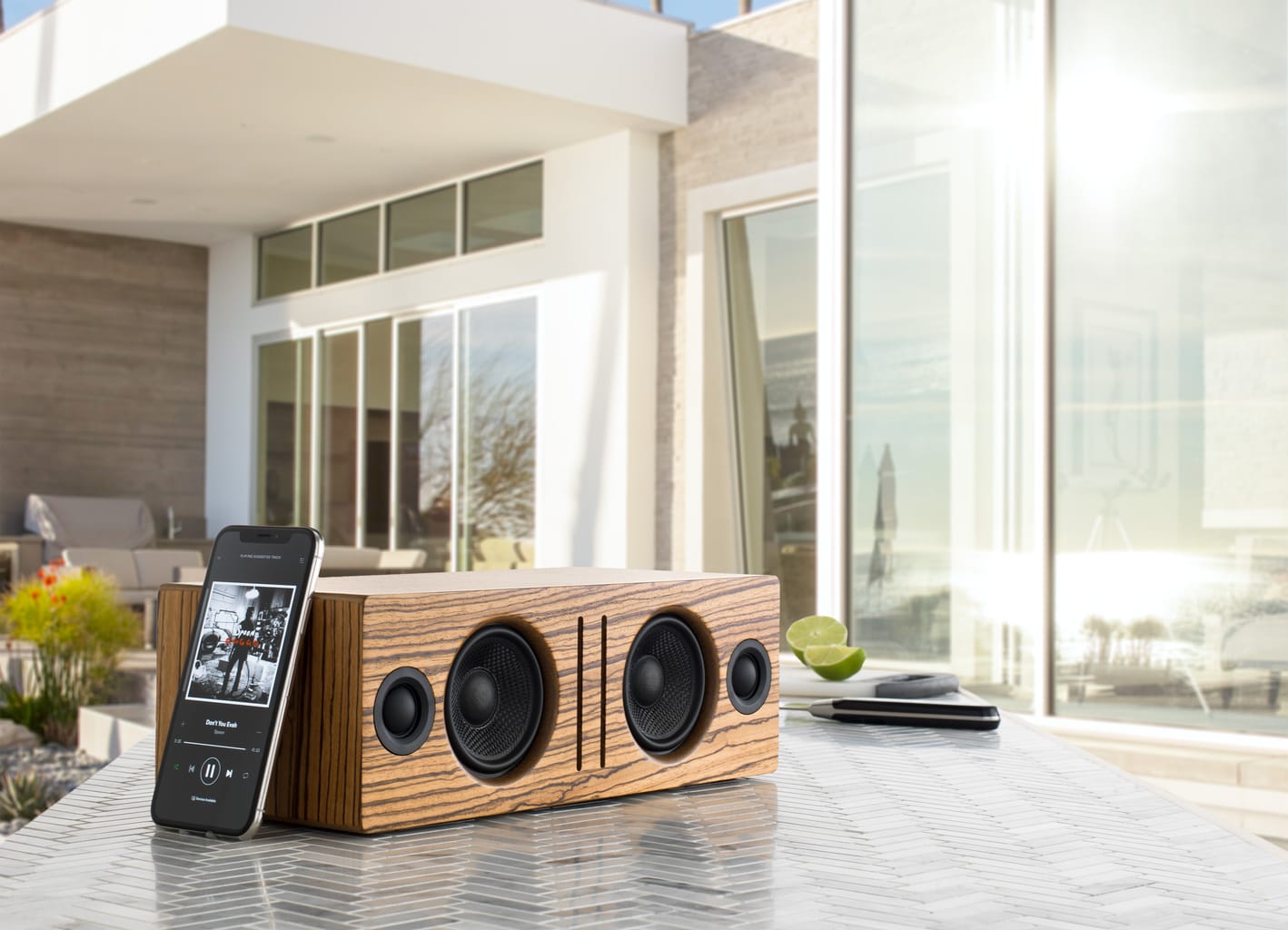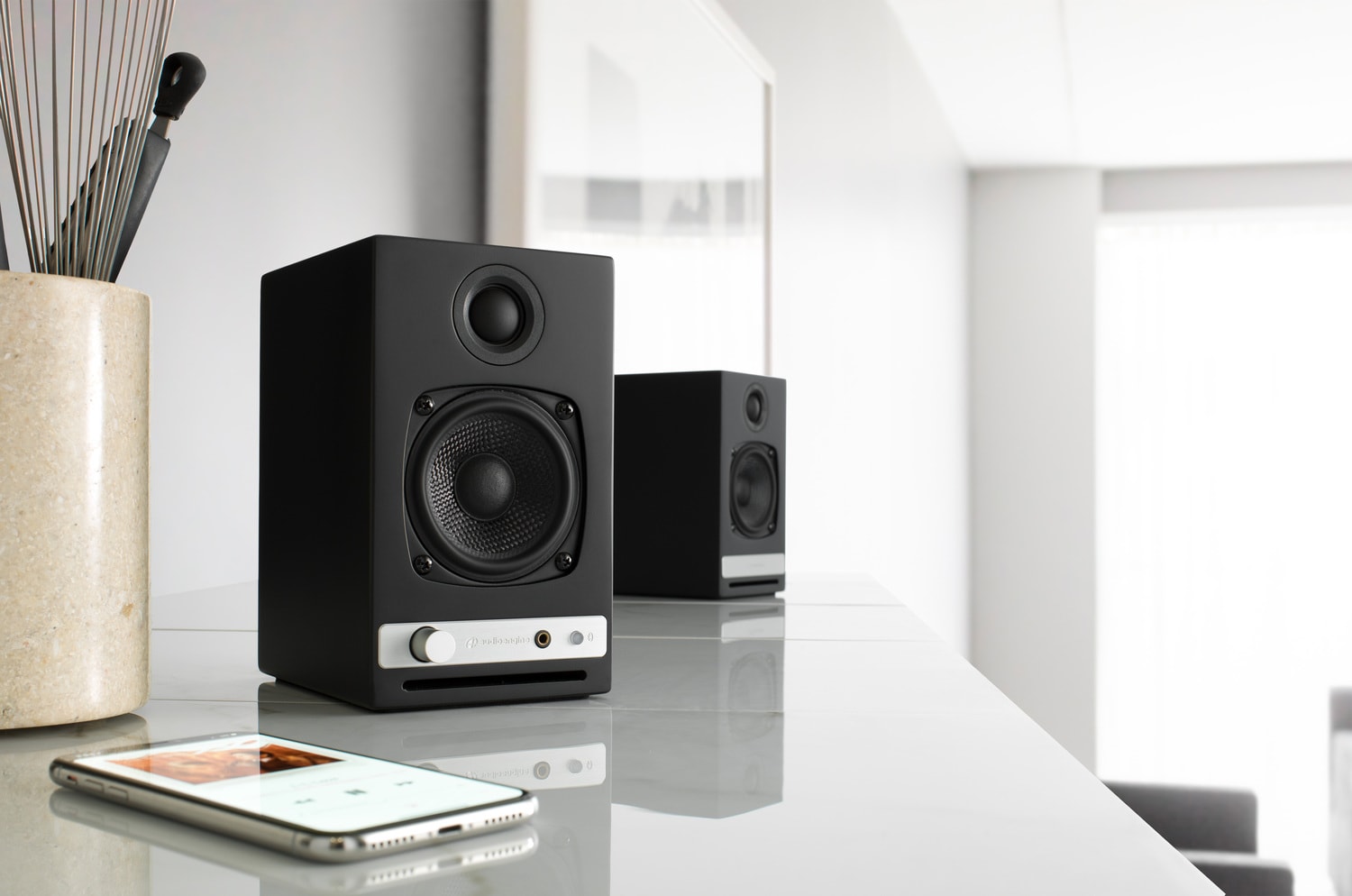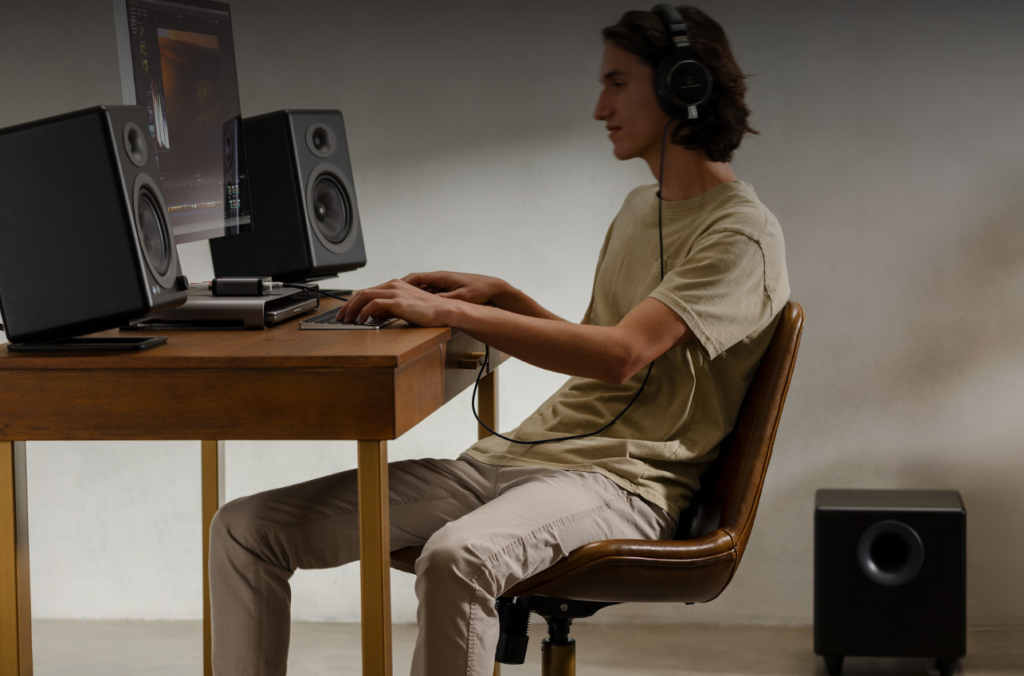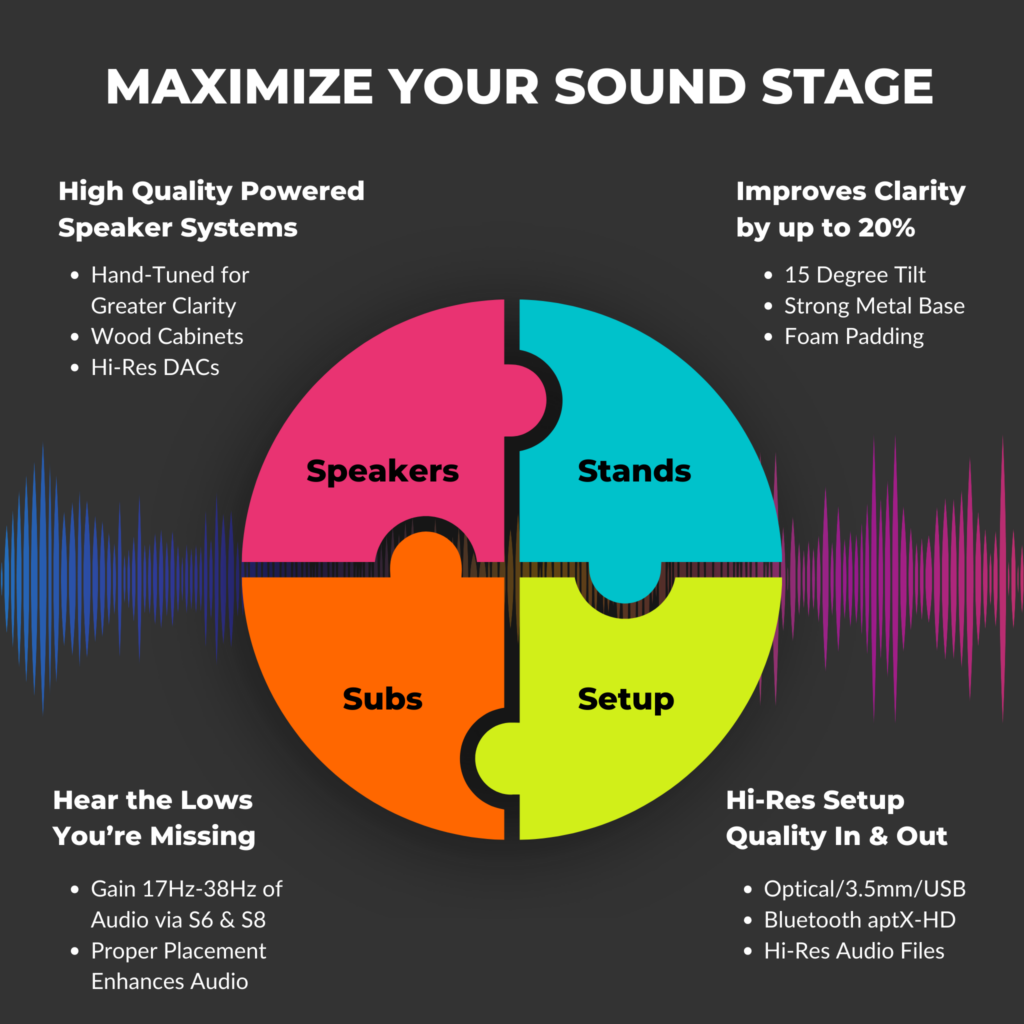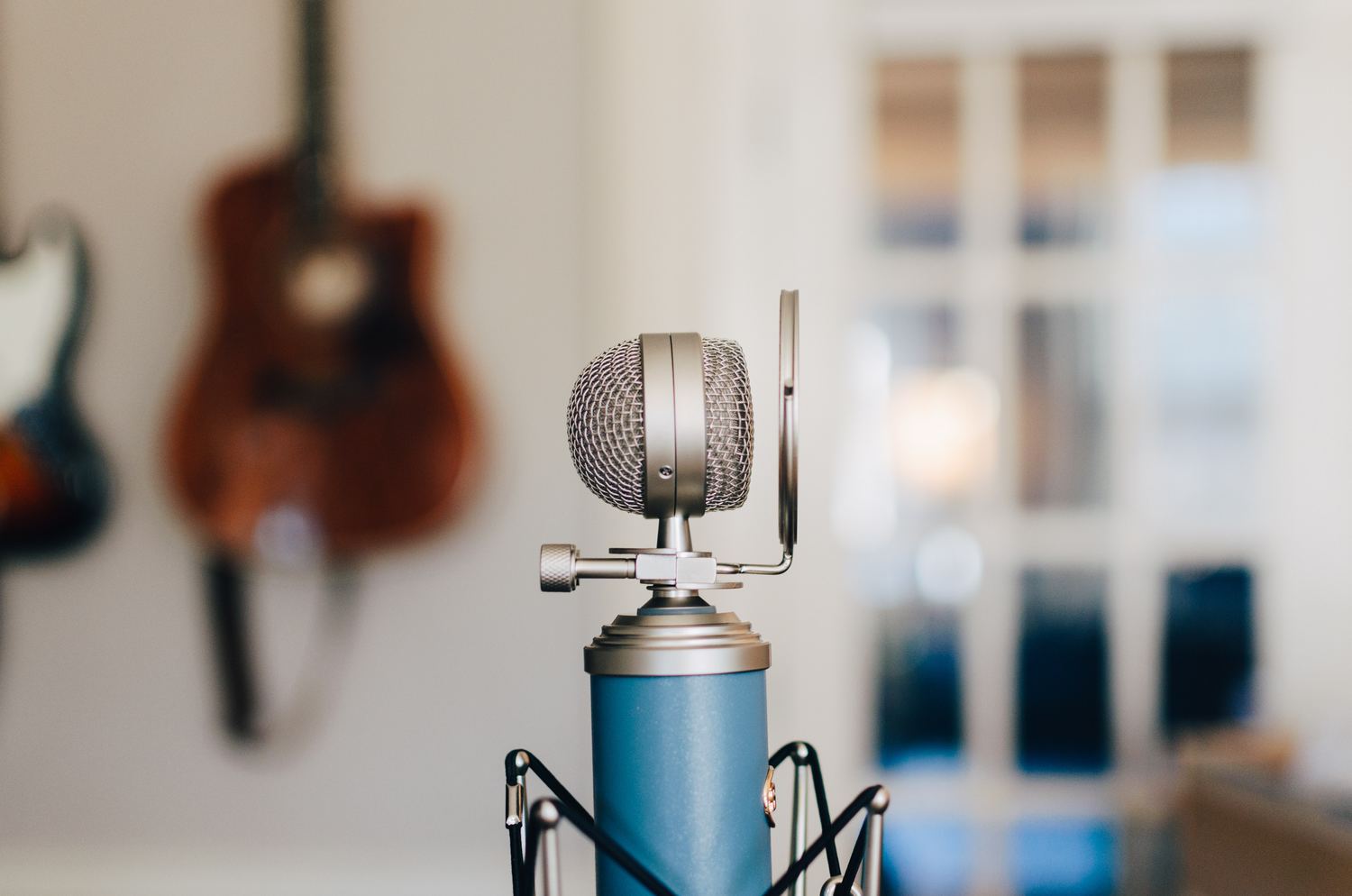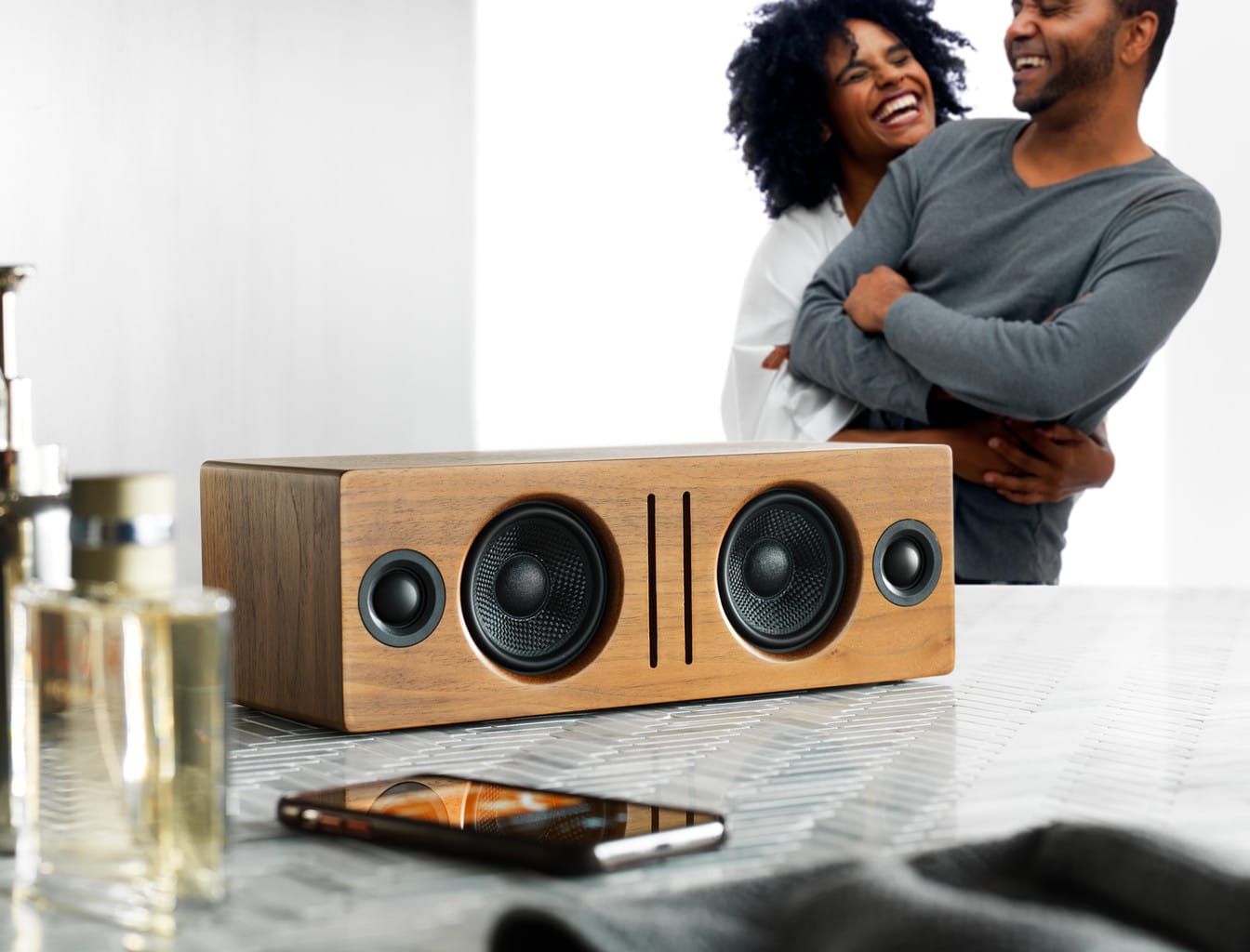Record Store Day: The Brain Child of a Record Store Clerk
We’ve all heard the old adage that history repeats itself or we’re all doomed or something like that. It’s hard to say which is true, but anyone who has lived at least 25 years has probably seen some aspect of fashion or technology recycle itself over that period of time. Take a look at the evolution of jeans, for example. The ever-popular skinny jeans or “drainpipe trousers” as they were once called, emerged in the 1950s thanks to such western stars like the singing cowboy, Roy Rogers. As time ticked on, the slim-pants look carried on through the 1960s with musicians like The Beatles and the Rolling Stones clad in painted-on denim.
Why is an audio company giving a history lesson on skinny jeans? Wait for it…
Once the 1960s hit, the trend shifted to bell bottoms as hippie culture arose. However, now that we have reached the 2000s, the skinny-jean fad has made its way back into style.
It’s important to note how things like fashion trends seem to recycle throughout the decades because the same thing happens with technology (and there it is!). There’s something magical about the crackling of a needle scraping along a vinyl disc that keeps many music lovers attached to analog sound. There’s something to be said for vinyl records and modern turntables, as many would argue that analog sound provides a crisper, more accurate representation of music than digital recordings do.
The phonograph or gramophone disc record was the primary medium for reproducing music in the 20th century. As digital media evolved from compact cassettes to compact discs to mp3 files, records have maintained continued manufacturing on a small scale since the 1990s and remain popular among a niche market of audiophiles.
One could say there is an underground record store culture that still exists today, with audiophiles collecting at least twice a year at their local record stores for Record Store Day.
With its inception in 2008 and held each year in April and November, Record Store Day serves to celebrate the independently owned record stores and their culture.
It all started as a last-ditch effort for survival as vinyl sales plummeted, and independent record stores scrapped for ideas to draw in new customers. Indie shops were starved for sales at the hands of online stores, big supermarkets and other major retailers spreading like a woods fire across the internet. The constant revival of the vinyl LP is a miracle when considering how digital streaming has taken over seemingly all other formats.
Many names can be credited to the steady development of what Record Store Day has become today, but the official idea sparked from the marketing team of an indie record store in Portland, Maine called Bull Moose Music. Chris Brown, originally hired to work as a clerk at the shop in 1991, sent an email to Michael Kurtz, head of the department of record stores. The general gist of the email acknowledged the slow sales period for record stores and recommended a day where vinyl-loving audiophiles could come hang out and have fun.
Needless to say, the idea for Record Store Day sparked national participation which has resulted in increased sales, essentially reviving the record store community.
“Indies rule,” Brown wrote. “We haven't gone anywhere. We are better than ever, and we are more important than ever before.”
The fact remains that music is powerful and moving, and it withstands the test of time regardless of the medium its played from. Whether you prefer digital or analog, we have something for every audiophile out there, including the vintage-loving record heads. You may think you’ve memorized all your favorite jams inside and out but connecting either our custom-built A2+ Wireless or A5+ Wireless speakers will reveal surprises in your audio experience that your ears have never tasted before.
Technology has come a long way since the beginning of vinyl, but we aren’t forgetting our roots.
We may not sell vinyl or turntables, but we want to perpetuate the positive vibe and culture of Record Store Day.
If you're searching for a sleek-looking stereo system to connect to your prized turntable, this is where vintage and modern combine in the best way. We're not talking about your dad's clunky, dust-ridden stereo contraption but a truly robust stereo sound from speakers built with quality materials.
Audioengine is the solution for a myriad of audiophiles, including the analog lovers. The A2+ Wireless and A5+ Wireless speakers are great options for the turntable setup of your dreams, with the modern and compact design made to leave you with plenty of room to spare for all those classic records you have to store. Our analog music systems have a warmth that you simply can't get with other similar powered speakers. And if the A2+ and A5+ still aren't tickling your retro, old-school fancy enough, we have a more classic HD-Series that is sure to curb your vintage addiction.
Because who says vintage and modern can’t live happily ever after together?
Tiny Living. Big Sound.
There’s an epidemic upon us; a sudden mass hysteria surrounding the concept of tiny living.
Whether it’s a tiny house, vintage Airstream, camper, schoolie, or converted van, the world is becoming obsessed with the idea of #vanlife.
The real beauty of this trend is the hope to return to a simpler time by shedding the possessions that no longer serve us and finding inspiration elsewhere. But how do we define what possessions are necessary and what ultimately inspires us? I was recently faced with these questions when I myself moved my life into a converted 15-passenger van and hit the road looking for something I’d perhaps lost. And while at first, quality speakers didn’t seem necessary, they have proven worth their weight in gold.
Not only does my Audioengine B2 wireless speaker blend great into my sleek, Instagram-worthy van photos, but it adds a nostalgic dimension to all my travels.
The B2, which only requires a power connection, will obviously connect to the power provided at any campsite, hostel, hotel, etc. but also works beautifully when I’m completely off the grid. Three 100-watt solar panels mounted to the roof of my van harvest every bit of power I could possibly need for these speakers and since my Audioengine does its job without devouring excess energy, my solar batteries can handle a full night of listening.
But why is this important?
Many of us are looking for something more. Inspiration doesn’t come easy in today’s world of infinite distractions and shallow social engagements.
For me, music is in itself as much of an escape as hopping in a van and heading for the horizon. In fact, music is the perfect companion to an adventure and so it’s important to have quality sound. Kicking open the back doors of my van on a cool, dry evening, and letting Miles Davis’ Kind Of Blue fade seamlessly into a symphony of midwestern crickets is the definition of inspiring.
Adhering new memories to familiar songs that already have so many deeply personal and emotional ties is something indescribable. But then again, I’m the type of person who carries music around with me everywhere I go. I breathe it, I crave it, I exude it. And now, I can be absolutely anywhere and hear my music as it is meant to be heard rather than letting it destroy my laptop speakers on full blast every single night.
Again, I believe the goal for so many vanlifers is to assess the material things they cling to and to allow themselves to find pleasure in purging the inessential.
Apart from that, vanlifers are looking for something more. They roam the Earth hunting down reminders, sniffing out knowledge, and creating memories.
Personally, I begin to feel very nostalgic on the road and it calls to mind certain bands or songs I haven’t thought about in years. And I absolutely must embrace this. Nostalgia is one of the many tinders of inspiration, and the spark is a single moment. A moment when there is a faint familiar smell in the air, the wind is blowing just right, and you turn onThirteenby Big Star to seal it all in.
So when I think back to the day when I moved all my things into storage, sold the useless bits, and organized everything else into its exact place in my van, I would say my Audioengine speakers are not just necessary but absolutely imperative. They are small and robust in build, sleek and modern in aesthetic, friendly and modest on power consumption and all too easy on the ears.
There is no reason your tiny little life should go without big sound.
Best Bluetooth Speaker for iPhone
Some of our customers have asked us, “what’s the best Bluetooth speaker for iPhone?” Since Bluetooth is becoming more accessible, better sounding, and more convenient than using cables, it isn’t surprising that this question has come up.
While we offer a few different speaker options with built-in Bluetooth receivers, finding the one that’s the best Bluetooth speaker for iPhone can really come down to the size that would work best for your room and any additional features you’re looking for.
First up, we have our Audioengine B2 Wireless Speaker. The B2 was designed to be a standalone wireless speaker that is easy to set up and delivers great sounding audio.
The B2 sounds similar to our A2+ speakers; think of it as the A2+ turned their sides and encased in a single solid-wood veneer cabinet.
Even though the B2 is in a single cabinet, you’re still getting a stereo sound; the left and right channels are separated in the cabinet so there wouldn’t be any unwanted resonance. The B2 works great as an easy-listening, background music solution whether you’re cooking in the kitchen or throwing a small party.
Next, we have the HD3 Wireless Speakers. The HD3 is a pair of desktop speakers that is loaded with features, such as a built-in Bluetooth receiver, USB input, two analog inputs, and an RCA output for a powered subwoofer. Since the HD3 features a left and right speaker, it allows you to spread the stereo imaging apart, unlike the B2.
The HD3 not only works for playing music while sitting at your desk, but it also works great in small rooms and offices.
Not to mention that it made PC Magazine's 2018 Best Wireless Speakers list.
Finally, there’s the HD6 Wireless Speakers. Bigger than it's little brother the HD3, the HD6 is able to be played louder and deliver more bass than the HD3s, making it great for larger rooms.
Along with Bluetooth connectivity, the HD6 also sports an optical input so you can easily connect it to your TV. Just like the HD3, we’ve also included two analog inputs and an RCA output so you can make this the ultimate music-listening, television-watching speaker setup.
It’s hard to say for sure what exactly the best Bluetooth speaker for the iPhone is, but between our options for wireless speakers, you shouldn’t have an issue finding speakers that not only have sound great but are perfect for your needs and space.
[Find out what speakers are best for you. Take the quiz]
Need some more input, ask your fellow music lovers what speakers they are using and why they love them.
What is Soundstage?
Imagine yourself in a small theater, 10 rows from the front, dead center, watching an orchestra perform on stage.
You can see the strings seated closest to the conductor and fanning outward from center stage to the wings; the woodwinds perfectly centered and stacked in two rows slightly further back than the strings; the percussion section sounding in a crash from the very back of the stage.
Now close your eyes and listen.
Can you still “see” the orchestra? Are the drummers drumming from just as far away? Are the strings still dense with detail? This, in so few words, is the basic idea of soundstage.
So, what is Soundstage? In the world of audiophiles, soundstage (or speaker image) is an imaginary three-dimensional space created by the high-fidelity reproduction of sound in a stereo speaker system; in other words, the soundstage allows the listener to hear the location of instruments when listening to a given piece of music.
How Is Soundstage Created?
There are many factors that play into this, but one that is commonly overlooked is simply, the imagination. Some listeners are perfectly content jamming Taylor Swift over their laptop speakers, which can’t possibly provide the deep musical escape that more imaginative listeners seek.
If you are reading this article in the first place, it is likely that you crave a more immersive musical experience; that you are willing to overlook the reality of a listening experience wherein sound is being moved across a two-dimensional plane through your ears (this is called the “headstage”), and are capable of giving yourself over to the spoils of the soundstage.
To truly unlock the full potential of your home music system, several enhancements can be made to ensure you are making the most of your setup.
How to Complete your Soundstage
Another major element in the creation of a detailed soundstage is the initial capturing and production of sound. Whether an instrument or group of instruments was recorded via close mic’ing techniques, room mic’ing techniques or a particular blend thereof, can determine what sort of auditory artifacts or ambient cues are left in the final product.
Ambient cues are signs that provide an indication as to where an instrument is located. For example, instruments that are louder in a mix tend to be perceived as being physically closer. Likewise, lack of textural detail, and ambient effects such as reverberation and delay can cause an instrument to seem far away. Volume, panning, tone, mic’ing, performance, and effects all play a part in how an instrument’s “location” is perceived by the listener.
Speaker and amplifier design also play heavily into the creation of a quality soundstage; transformers, driver material and size, crossover components, and preamp and power amp components, dramatically affect the speaker’s ability to accurately reproduce sound. The construction of the cabinet is equally crucial. There are many cabinet designs on the market, each touting their own benefits, and an avid audiophile could likely tell the differences between dipolar speakers, bipolar speakers, open baffles, sealed front-firing cabinet designs, and everything else under the sun.
Lastly, and just as critical of an element as any other, is speaker placement. Different speakers are designed and tuned in different ways and are thus optimized by their relationship with one another and their surrounding environment. The rabbit hole that is finding the “sweet spot” for a given pair of speakers is one that is long, dark, and twisty, but once found gives way to an unparalleled listening experience. Dimensions that will affect the experience are as follows:
- Distance between the two speakers
- Distance of the speakers from nearby walls
- Distance between the speakers and the listener
- Height of speakers in relation to the ears of the listener
- Vertical angle of speakers
- Horizontal angle of speakers
All of these dimensions, as mentioned, will have a noticeable impact on the overall listening experience and should be taken into consideration. Luckily, the process of finding the sweet spot can be fun and educational for those seeking a deeper knowledge of how speakers and their environment interact.
But why is Soundstage important?
The simple fact is, soundstage is not important to all listeners. Music and sound do not mean the same thing to everyone, which is why we all have different speakers in our homes, in our cars, and in our pockets.
Soundstage only becomes important when the listener deems that it should.
This is why there are countless forums, blogs, and tech columns dedicated to those seekers of supreme immersive sonic experiences. Once one gives himself over to this philosophy, that music can and should be as visual as it is auditory, soundstage becomes of the utmost importance, as it is the one thing allowing music to exist in a large and detailed three-dimensional space — all from the comfort of one’s couch.
Make the transition to a wireless system across the board.
So you’ve decided to integrate wireless speakers into your home or office… Awesome! Wireless speakers provide convenience and mobility without sacrificing sound quality.
When it comes to setting it up, though, you might be concerned as to whether or not all of your devices will connect seamlessly with your new speakers. Luckily, Audioengine’s wireless speakers are pretty user-friendly and can be connected to various types of devices.
For most mobile applications, such as streaming music from your smartphone or tablet, connecting to your speaker system is a simple matter of going into your device’s Bluetooth settings and connecting to the proper device. From there, your device will be able to reconnect with the wireless speakers at any time.
TVs and desktop computers can be a bit more complicated in terms of avoiding the usage of pesky wires and cables, which you probably wanted to eliminate when you opted to buy wireless speakers in the first place; however, there are a few options to make setting up your system easier, such as using wireless adapters with your sources. Wireless adapters, such as our W3 Wireless Adapter and D2 24-bit Wireless DAC, enable wireless connectivity in devices not previously built for wireless connections. You can still make use of those cables, of course, if you are uninterested in purchasing additional pieces for your audio system; since our wireless speakers feature analog inputs, they can easily be connected to them by simply connecting their line level outputs to the input of these speakers..
Our technology
Audioengine's wireless speaker systems and adapters make it possible for you to tune in from almost any device. Most of our products can also connect to multiple different types of brands or sources, so whether you prefer iPhones, iPads, or even Android devices, we have the wireless system components that will best accommodate you and your lifestyle.
